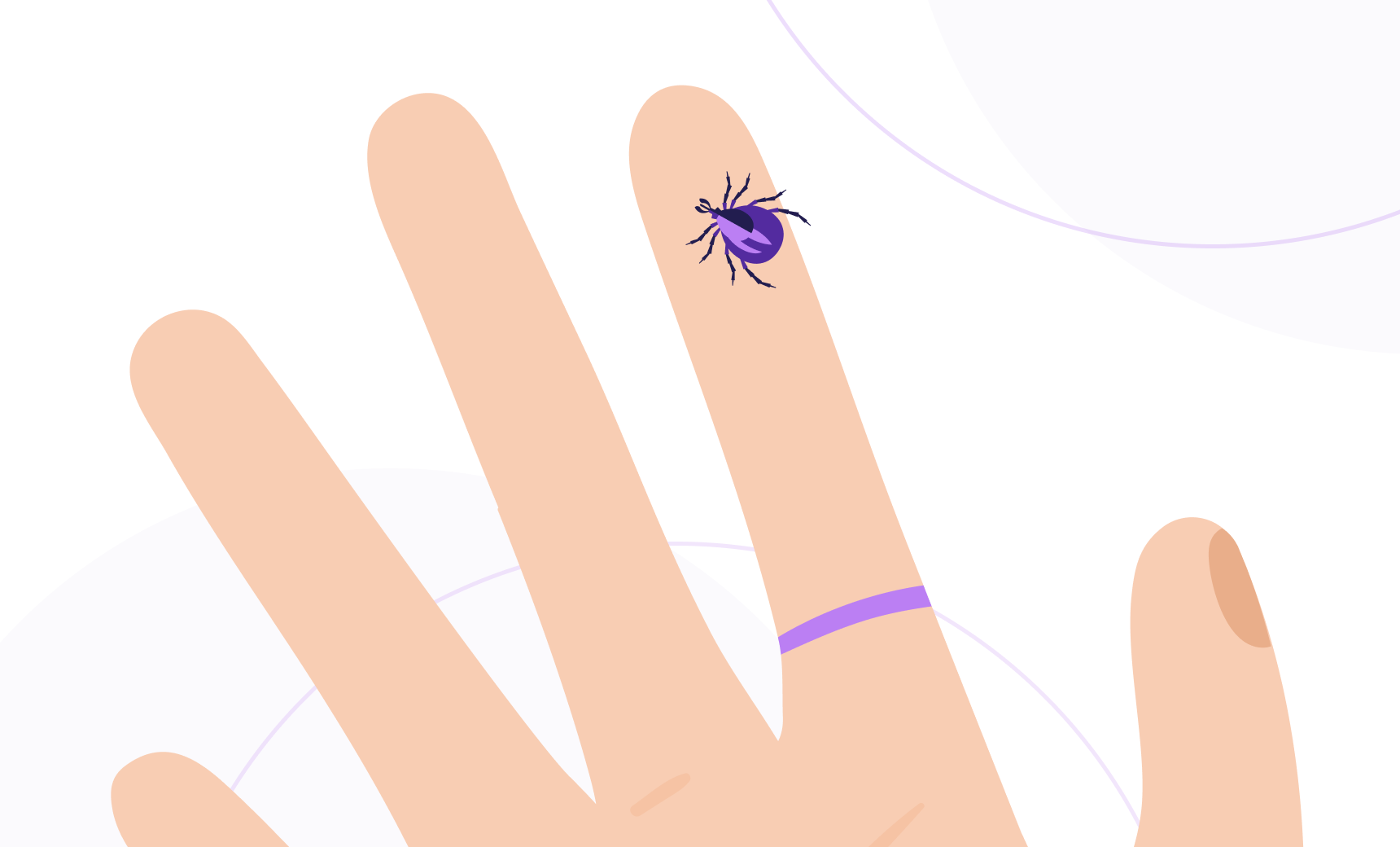
Your Guide to Lyme Disease
Ticks suck. Keep yourself safe with these tips about Lyme disease.
You’re in the great outdoors, enjoying a solo hike. But something lurks in the brush, sensing your approach. It can detect your body odor, the carbon dioxide from your breath, even the heat coming off of your body. It can feel the moisture from your sweat, the vibrations of your feet. It knows where you’ll likely pass by, and so it gets in position and waits…and waits…until it’s time to make its move.
Is it an alien? An assassin? Some kind of super-soldier spy? Nope, it’s a tick. These sneaky little insects wait for hosts — that’s you, or your pet, or another animal — on the tips of grasses and shrubs until you brush by. Then they climb aboard, trying to find a place to nestle into your skin and suck your blood. Yes, ticks are creepy. They’re also vectors of diseases, notably Lyme.
You can catch Lyme disease at any time of the year, but April through October is considered prime tick season. Though 30,000 cases of Lyme disease are reported to the CDC each year, some estimates say as many as 476,000 people may get Lyme disease each year. What’s more, Lyme seems to be on the rise. One report estimated that Lyme diagnoses over the past 15 years have increased 357% in rural areas and 65% in urban areas.
Though most cases can be treated within a few weeks, some patients experience pain, fatigue, or brain fog that lasts for months. Here’s what you need to know about ticks and Lyme so you can protect yourself and your loved ones.
What is Lyme?
Lyme disease is the most common tick-borne disease, caused by the bacteria Borrelia burgdorferi and Borrelia mayonii from black-legged ticks.
Where can I get Lyme disease?
It first surfaced in the town of Old Lyme, CT, in 1975. Today, Lyme is found in all 50 states, as well as parts of Europe and Asia. However, it’s most common in the Northeast, upper Midwest, and Northwestern United States.
Ticks tend to live in grassy, brushy, and wooded areas. Hiking, camping, gardening, and other outdoor activities might bring you in contact with ticks. Pets can also carry ticks indoors.
How can I prevent tick bites?
Avoid walking through tall brush and grasses when you’re outside. Wear clothes that cover your body, particularly your limbs. And consider spraying your clothes with permethrin (.05%), which deters ticks. Permethrin requires application after every 5-6 wash cycles.
How do I check for ticks?
After being outdoors, check your body. Ticks are very small arachnids and can go unnoticed, The faster they are removed, the lower the risk of transmission. Check behind the ears, on the scalp, around the waist, in armpits, in the belly button, on the backs of the knees, and in the groin area. The CDC recommends showering within two hours of coming indoors, which lowers the risk of getting Lyme. Because clothes can also harbor ticks, the CDC also recommends washing clothes in hot water and tumble drying them for at least 10 minutes on high heat.
Check pets for ticks regularly and talk to your veterinarian about the best prevention methods, including medication or repellant.
Eek! I found a tick! What do I do?
Remove the tick with tweezers. Grasp the tick as close to the skin as you can and pull upward with an even, gentle pressure. If any parts remain embedded in your skin, remove them. Clean the bite with alcohol or wash it with gentle soap and water, and follow up with an antibacterial ointment. Not all tick bites result in Lyme, but monitor the bite for changes. Use a marker to circle the bite, which will help you see if the red appearance expands. Look out for the development of a “bull’s eye” shaped rash. See your doctor as soon as possible for antibiotic treatment.
Are there tests for Lyme disease?
Yes, you can get tested for Lyme disease. LabFinder offers scheduling for Lyme disease tests. These blood tests look for antibodies fighting the bacteria.
You can also collect the body of the tick that bit you, enclose it in a baggie or envelope, and send it for testing to see if it carries pathogens that lead to tick-borne illness. But, in most cases, self-monitoring and getting yourself tested will be sufficient.
How can I tell if I got Lyme disease?
The top early sign of Lyme is the “bull’s eye” skin rash, which develops in 70-80% of those who have Lyme. Other symptoms include fatigue, and joint pain, as well as heart and nervous system complications. You can also get the Lyme disease blood test to find out.
What treatment is there for Lyme?
Most people with Lyme recover after a standard, two to three-week course of antibiotics. However, if left untreated, those with Lyme may experience severe headaches, neck pain or stiffness, abnormal heart rhythm, chest pain, facial palsy, and arthritis-like pain and swelling in the joints. In some cases, even after treatment, people may experience pain, fatigue, or brain fog lasting upwards of 6 months.
Have questions about Lyme disease? Or are there other topics you think we should cover? Drop us a line at illuminator@labfinder.com.





LabFinder Editorial Team
The LabFinder Editorial Team is behind The Illuminator and The Insider, LabFinder’s consumer and business blogs.
Dr.Robert Segal
Dr. Segal is CEO and co-founder of LabFinder, as well as a board-certified cardiologist. He began practicing medicine in 2002 and has founded several businesses, including Medical Offices of Manhattan and Manhattan Cardiology.